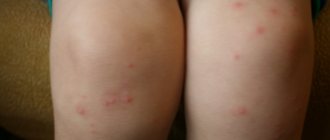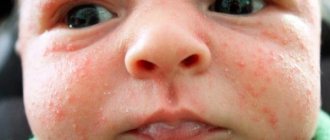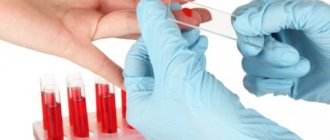Anyone who has had problems with pimples on their face knows how difficult it is to stop themselves from squeezing them out. Pimples on the nose and around the mouth look especially unpleasant because they are in plain sight and cause discomfort. Doctors warn that this area of the face should not be injured. It’s not for nothing that the nasolabial triangle is also called the triangle of death.
And this area of the face, changing color, warns of pathologies developing in the body. So, what does the nasolabial triangle tell us about and why it should not be touched.
Infection in the Triangle of Death kills the brain
The nasolabial region is characterized by specific venous vascularization: the blood vessels passing here connect to the brain. Facial veins do not have valves, which allows the infection to spread more quickly.
Although situations where infection leads to a threat to health and life are rare, it is worth knowing this feature of the body and avoiding any intervention in the nasolabial area.
Complications arising from infection in the area of the nasolabial triangle lead to cavernous sinusitis. Inflammations often appear after infection with staphylococcus or other bacteria, which, after an injury or after squeezing out pimples, penetrate the damaged tissue.
A developing infection, which will not be so dangerous in other places, in this case leads to serious illnesses - meningitis and brain abscess. Therefore, if you have skin problems, you need to treat the infection, but under no circumstances try to get rid of acne by squeezing.
Thrombophlebitis of the facial veins and cavernous sinus thrombosis are serious complications that are now rare thanks to antibiotics. Sinus thrombosis is especially dangerous. People who develop the pathology complain of fever, chills, headache, vomiting, nausea and impaired consciousness. At a later stage of the disease, vision problems occur as a result of cranial nerve palsy.
Patients experience:
- visual impairment;
- photophobia,
- mydriasis;
- swelling around the eyes
- facial hyperalgesia.
Thrombotic sinusitis is treated with antibiotics, anticoagulants, or glucocorticosteroids. In some cases, surgical cleaning of the cavernous sinus may be necessary.
Perioral dermatitis on the face: treatment, causes, symptoms
Perioral dermatitis is a chronic or recurrent inflammatory disease of the skin around the mouth. It affects mainly women, especially young women (25-40 years old), and looks very similar to acne or rosacea. Only an experienced specialist is able to distinguish between these diseases, make the correct diagnosis and prescribe treatment.
Causes of perioral dermatitis
- It is believed that the inflammatory process around the mouth is caused by certain components of decorative cosmetics and frequent skin irritation.
- Excessive use of facial care products is also a common cause.
Constant use of fatty creams and oils causes swelling and increases the fat content of the epidermis. The result is pimples and redness. - The appearance of perioral dermatitis is facilitated by the abuse of toothpastes and other oral care products that contain sodium lauryl sulfate and fluoride.
- Another cause of the problem is the chronic use of topical glucocorticoid drugs.
- Hormones also play a role in the development of the disease. Therefore, patients often become women taking oral contraceptives
- Other risk factors are solar radiation, a genetic tendency to develop vasomotor reactions, and the presence of other dermatological diseases (for example, acne).
Symptoms of perioral dermatitis
Perioral dermatitis causes changes that may resemble acne—papules, pustules, and blisters on reddened skin. As we have already said, the rashes occupy the area of the chin and nasolabial triangle, leaving the area around the mouth free. The epidermis in these places is tense, there are signs of peeling. Sometimes the patient complains of itching and burning in the affected areas.
The disease has a chronic course, lasting from several weeks to several months.
Important! Perioral dermatitis can easily be confused with acne and rosacea! The difference is that with dermatitis there are no comedones (as is the case with acne), and the redness is localized strictly in the mouth area (unlike rosacea, which affects the cheeks).
Diagnosis of perioral dermatitis
If you suspect you have this disease, you should visit a dermatologist who will rule out other skin problems. In order to diagnose perioral dermatitis, histopathological analysis and epidermal testing will be needed.
The doctor will also interview the patient about the use of steroid ointments, lifestyle, and genetic predisposition to inflammatory dermatological diseases.
Treatment of perioral dermatitis
So, you have been diagnosed with perioral dermatitis. How to treat this disease? This decision must be made by the doctor.
Therapy is difficult and lengthy. The first step is to stop taking corticosteroids - this technique is called “zero treatment”.
If the cause of inflammation lies precisely in these drugs, there is a high probability that the rash will disappear spontaneously.
The patient should also temporarily stop using cosmetics - lipsticks, lip balms, face creams, etc. It is recommended to carefully wash with clean water without soap.
In severe cases, the patient is prescribed oral antibiotics (such as azithromycin, erythromycin, metronidazole), vitamin A derivatives and azelaic acid. Sometimes drugs of the imizadol group (metronizadol, trichopolum) give a good effect.
Perioral dermatitis photo
To accelerate the regeneration of the epidermis and eliminate redness, mild moisturizing and anti-inflammatory agents, such as Ivostin cream, are used. In case of severe itching and irritation, general antihistamines (for example, Fenistil) are prescribed.
Since Malassezia fungi can develop against the background of inflammatory lesions (which significantly complicates the healing process), the doctor may prescribe topical antifungal agents that provide a good anti-inflammatory effect (for example, Lamisilate cream).
All these drugs do not belong to the group of steroids, which means they are completely safe for adult patients and children.
During the period of therapy, it is better to give up coffee, alcohol, sweet carbonated drinks, spicy and smoked foods, processed foods and fast food. Try to avoid stress and direct sunlight.
If, after recovery, the patient is concerned about aesthetic problems (spots, spider veins and scars remain on the face), it is necessary to seek the help of a cosmetologist. The specialist, based on the client’s condition, will prescribe laser procedures, liquid nitrogen treatment, electrocoagulation and other procedures.
Prognosis and consequences of perioral dermatitis
Timely consultation with a doctor guarantees successful treatment and absence of relapses. Otherwise, the following complications are possible:
- eye damage (inflammation of the eyelids, conjunctivitis);
- the appearance of acne and rosacea;
- extensive lesions;
- dark spots after rashes.
In addition, nodules and papules in the mouth area look very unaesthetic, causing psychological discomfort to the patient.
Prevention of perioral dermatitis
To prevent recurrence of pathology, it is necessary to use local corticosteroid ointments with caution. Do not exceed the duration of their use and dosage, but it is best to completely abandon such drugs.
People with increased vasomotor sensitivity should sunbathe moderately and avoid saunas and hot baths. It is best to wash your face with soft gels that do not contain sodium lauryl sulfate. Choose organic, fluoride-free toothpastes. After washing, it is necessary to lubricate the skin with creams with a light texture (without overusing cosmetics).
Source: //medictime.ru/okolorotovoj-dermatit/
White nasolabial triangle
If the nasolabial triangle has acquired a pale color and begins to stand out on the face, this is a serious reason to check your health.
Pale skin in this area can indicate a number of dangerous problems:
- Insufficient functioning of blood vessels
, resulting in seizures, atherosclerosis and other pathologies - Respiratory diseases.
The nasolabial triangle turns pale or blue with bronchitis, pneumonia, severe tonsillitis, bronchial asthma and respiratory failure. - Anemia
, in which cells do not receive enough oxygen due to a decrease in the amount of hemoglobin. - Local disruption of blood flow
in small subcutaneous vessels during colds or stress.
Prevention
To avoid an unpleasant rash on your face, you should:
- visit a cosmetologist several times a year;
- eat properly and balanced;
- choose cosmetics carefully,
- avoid depression and stress;
- promptly conduct examinations and receive treatment for any diseases;
- lead a healthy lifestyle.
To prevent rashes, you need to adhere to the following rules:
- When applying cosmetics, you should not use reusable sponges and sponges.
- Take vitamins. Complexes from group B, as well as vitamins A, C and E, have a positive effect on the condition of the skin.
Red nasolabial triangle
The skin in the nasolabial triangle turns red with the following pathologies:
- Allergic reaction
. Symptoms of individual intolerance occur when the skin is exposed to allergens: cosmetics, medications, herbs, etc. Also, redness in the nasolabial area is caused by a systemic allergy to wool, food, medications. Hyperemia is often accompanied by itching, peeling, rash, allergic rhinitis, lacrimation, and sneezing. - Perioral dermatitis
. This is a type of allergic reaction localized around the mouth). With perioral dermatitis, the skin becomes red, irritated, and covered with a small pustular rash. - Demodicosis
. The disease is caused by a microscopic parasite, the demodex mite. It may not appear for years and is activated under the influence of provoking factors: low immunity, hormonal fluctuations. Typically, demodicosis begins with redness of the nasolabial triangle, after which the mite spreads to the nose and cheeks. - Streptoderma, fungal diseases
and other skin diseases.
Rash under the nose in adults: causes and recommendations
A rash under the nose causes a lot of inconvenience, but identifying the causes of its appearance can be quite difficult. Only a dermatologist who has studied your medical record can determine them accurately. A rash around the nose brings not only aesthetic inconvenience, but also severe discomfort, and if infected, can pose a serious threat to human life.
Causes of rashes under the nose
The causes of a rash near the nose can be different. Rashes in the nasal area can be caused by:
- runny nose;
- allergy;
- insufficient hygiene;
- violation of the rules of care.
On sunny days, the appearance of a rash under the nose is caused by exposure to ultraviolet rays on the skin. The skin often reacts with a rash due to allergies: to foods, medications. In addition, a rash may appear due to changes in the quality of water, both drinking and washing.
Important! Errors in diet can lead to the appearance of rashes, especially if you have gastritis or oily skin. Most often, the causes of a rash under the nose are associated with factors that do not pose a danger to the body and can be easily corrected.
Rash under the nose in adults
Tray rashes often appear in the area of the nasolabial triangle. This is caused by increased activity of the strong glands in this area. Excessive oil production causes rashes. If an infection gets into the pores, but the raw material can degenerate into pimples or blackheads.
Poor hygiene or improper skin care often causes a rash under the nose in adults. Thus, alcohol-containing products irritate the skin and cause irritation. To cleanse the skin and remove excess sebum, products with antibacterial and anti-inflammatory effects should be used. Also the reason may be:
- Using dirty towels and bed. Dirty bed and towels are an excellent environment for pathogens that cause skin irritation. Don't forget to change your linens promptly and store your towels on a heated towel rail rather than on a clothesline.
- Errors in diet. A rash in the nasal area often appears due to diet disorders. Smoked foods, fatty meats, spices, foods with a lot of sugar, carbonated drinks, and alcohol can trigger rashes on or around the nose. You can get rid of rashes only by correcting your daily diet.
- Intoxication of the body. When intoxicated, the body cannot cope with the stress, resulting in irritation on the skin. Intoxication can be caused by poisoning, fever, liver disease.
- Violation of the rest regime. Insomnia or improper daily routine (late rising, sleepless nights) can cause rashes on the skin, most often the area around the nose, forehead and chin is affected. Also, the appearance of acne or rashes can be caused by sleeping under a warm blanket, which causes a person to sweat a lot.
Please note: bedding and towels must be changed weekly, otherwise they accumulate pathogens that cause rashes and pimples.
- Changes in hormonal levels. Rashes appear due to hormonal imbalance. Women may also experience it before or during menstruation. Men also have physiological cycles that affect hormonal levels and can cause regular skin irritations. In addition, endocrine system disorders are often accompanied by a rash.
- Gastrointestinal diseases. Digestive system disorders always affect the condition of the skin. The cause of the rash may lie in a disruption of the stomach or intestines. Diarrhea or constipation can also cause a rash under the nose, forehead or chin.
- Dermatitis. A small red rash is a sign of dermatitis, which can occur due to an allergic reaction. With dermatitis, rashes appear gradually: the skin turns red, then pimples or nodules form on it. They may merge into one spot or spread to other areas, but the area around the lips remains clean.
Important! Chronic diseases cause serious deviations in the functioning of the skin. However, rashes and pimples disappear after the acute phase of the disease is over.
- Acne. Adults often suffer from acne. The lesion begins with redness of the skin, later small pustules form. The formations are accompanied by pain and itching.
- Purulent acne. Pimples with pus can be multiple or single. They can occur not only due to hormonal disorders or insufficient care, but due to a deficiency of minerals and vitamins, weak immunity and poor nutrition.
- Subcutaneous acne. These pimples are not that noticeable, but they cause discomfort. They may be reddish or the color of healthy skin. The rash protrudes slightly above the skin and is painful.
- Increased sweating. Sweat under the nose often irritates the skin. Sweating can be caused by stressful situations, physical activity, hot weather, too warm clothing or physiological characteristics of the body.
- Runny nose and its consequences. When you have a runny nose, the skin under the nose suffers from secreted mucus, as well as frequent rubbing with paper or cloth handkerchiefs. As a result, a rash forms under the nose. The affected area turns red, peels, and may have small red dots or pimples. With a bacterial runny nose, the skin can also be infected with pathogenic organisms, and then the redness under the nose may not go away even after the runny nose is cured.
Recommendations for rash around the nose
To prevent rashes in the area of the nasolabial triangle, general recommendations should be followed:
- Conduct a cosmetics audit. This will help you get rid of expired products that caused irritation;
- If you have a runny nose, use a paper tissue, which should be thrown away immediately. Wet tissues promote the spread of bacteria on the skin in the nose area;
- With frequent rashes, it is necessary to introduce more foods rich in minerals, vitamins and fiber into the diet;
- Change bed linen and towels more often;
- Use antibacterial facial skin care products.
Attention! Do not squeeze or scratch rashes and pimples in the nose area. The nasolabial triangle is the most vulnerable area of the face, which has no physiological protection. Infection of the rash in the nasal area can cause serious abnormalities and leave scars. In addition, the infection can enter the bloodstream.
Important: if you regularly experience a rash under your nose that is not related to your cycle, you should consult a doctor. You should not only conduct an examination by a dermatologist, but also check the internal organs for pathology.
Rate this publication: Loading...
Source: //IDermatolog.ru/allergiya/syp/prichiny-poyavleniya-sypi-pod-nosom-u-vzroslogo.html
Numbness of the nasolabial triangle
Numbness in the lips and nose occurs if a person:
- Cervical osteochondrosis
. It manifests itself as frequent headaches and pain when moving the neck. - Lack of B vitamins
. Other symptoms: excessive fatigue, memory loss, decreased concentration, insomnia. - Bell's palsy or neuritis
. It is accompanied by pain behind the ears, the inability to close the eyelids and visually noticeable facial asymmetry. - Neurosis, depression or vegetative-vascular dystonia.
Varieties
There are different types of acne on the nasolabial folds:
Treatment for acne depends on the type and cause of its appearance.
Comedones. These are small black dots. They appear due to increased activity of the sebaceous glands when the pores become clogged. Over time, sebum oxidizes and turns black. Comedones can be closed or open.- Papules. Small blackheads with a white head that cause pain when pressed.
- Pustules. Medium-sized purulent rashes. They manifest themselves as painful sensations, itching and redness. To remove them, pulling agents or mechanical cleaning are used. Traces may remain after the pustule.
- Cystic acne. This is a severe form of rash in the form of large cysts. The formations are dense, painful, and very itchy. After the rash disappears, scars remain.
- Lightning rash. The rash appears due to a sudden decrease in immunity. Such acne is accompanied by fever and weakness.
Triangle of death: how Queen Katarzyna of Württemberg and composer Scriabin died
Acne in the area of the nasolabial triangle has killed many people - men and women, incl. famous. Let us give just two illustrative examples confirming the danger of independent intervention.
Queen Katarzyna of Württemberg.
The New Year 1819 began for the royal family in Stuttgart. Everything went as usual: solemn prayer, dinner, walk, opera performance. On the evening of January 3, Queen Katarina Pavlovna, daughter of Emperor Paul, noticed a pimple in the right corner of her mouth. The woman squeezed it out and went to bed.
The next day the Queen visited the stud farm in Scharnhausen. And in the evening she complained to the doctors about pain and swelling on the right side of her face. The next morning, the woman developed a fever, the pain intensified, and the swelling spread to her upper lip. It was not possible to relieve the symptoms. On January 9, the queen died. She was only 30 years old.
Alexander Scriabin.
Another similar example is the death of Alexander Scriabin. The Russian composer died from blood poisoning that began after squeezing out pimples.
Acne at 40 years old. Where are the reasons?
Let's look at the characteristic appearances of acne in women of Balzac's age. So, acne on the face at 40–45 years old is the cause of the disease: The main causes of acne formation at the age of 40
- Stress. Lack of sleep, overwork, shocks - isolated and chronic - become fundamental to the appearance of acne. Some women do not see the thin connecting thread between acne and stressful situations. In fact, stress affects the pituitary gland and adrenal glands and provokes an increase in the production of hormones, which in turn contributes to the spread of the rash. When scratching the lesions, the itching intensifies, which gives rise to the appearance of age spots.
- Hormonal changes. Inflammation of the skin is sometimes explained by disturbances in the stages of the menstrual cycle, a premenopausal state, or the use of contraceptives in tablets. The result is the appearance of acne.
- Cosmetics. Cosmetics containing commodogenic components, isopropyl myristate and its derivatives cause acne in women aged 40 years, the reasons for this have been established by experts. Creams, hairsprays, and conditioners that contain ingredients that are not suitable for a particular skin type can be problematic for the skin. Wrongly chosen and low-quality cosmetics provoke the appearance of white pimples and pustules.
- Medications. Some medications (groups of anabolic steroids, testosterone, corticosteroids) produce a side effect that causes acne.
- Diseases. As a result of dysfunction of the ovaries, endocrine system, functioning of the gastrointestinal tract, dysfunction of the adrenal cortex (Cushing's syndrome), the body is filled with toxins - poisonous substances. The result is a rash not only on the face, but throughout the body.
- Infectious parasites. Subcutaneous mites and other multicellular organisms feed on the secretions of the sebaceous glands. After death, after 15–20 days, they decompose in the subcutaneous layer, and the decomposition products cause irritation of the skin and provoke inflammatory processes.










